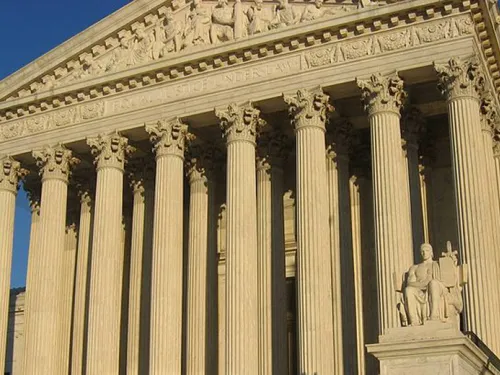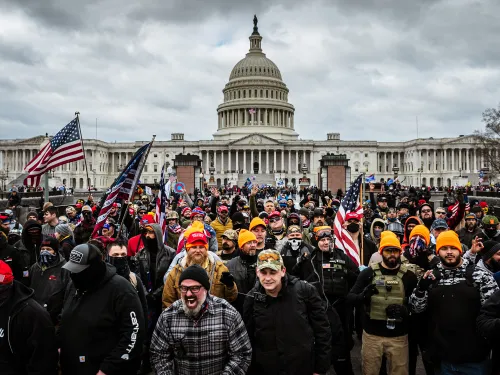August 06, 2015
This post was originally published as part of a larger ADL Retrospective on ADL’s archived website.
This was the cry of the furious mob outside the Atlanta courthouse where Leo Frank, a Northern Jew, stood trial after his arrest in 1913 for a murder he did not commit. Anti-Semitism hung heavy in the courtroom as Frank was found guilty and sentenced to death. Though a courageous governor later commuted the death sentence to life imprisonment, Frank never did serve the term. In August 1915, the "Yankee Jew" was lynched by a mob calling themselves a "vigilance committee."
The brutal murder of Leo Frank did not occur in a vacuum. As the 20th century dawned, anti-Semitism was rampant in an American society where resorts commonly advertised, "No dogs! No Jews!" and magazines featured "humorous" caricatures of Jewish people.
It was in this atmosphere that the Anti-Defamation League was established in 1913 by a lawyer and fearless visionary by the name of Sigmund Livingston. Starting with only two desks in Livingston's Chicago office, $200 and the sponsorship of the Independent Order of B'nai B'rith, Livingston spelled out the League's ambitious, compelling mission: "to stop, by appeals to reason and conscience, and if necessary, by appeals to law, the defamation of the Jewish people. . . to secure justice and fair treatment to all citizens alike. . . put an end forever to unjust and unfair discrimination against and ridicule of any sect or body of citizens."
Early on, ADL took significant steps to eradicate the negative images of Jews in print and their stereotyping on stage and in the movies. The League was still in its infancy when Adolph S. Ochs, publisher of The New York Times and an ADL executive committee member, wrote a memo to newspaper editors nationwide discouraging the use of "objectionable and vulgar" references to Jews in the media. Within two years, Livingston reported "only 50 cases" of such objectionable references to Jews in the national press. By 1920, the practice had virtually stopped.
With the advent of the First World War, Jews were targeted by anti-Semites as "slackers" and "war-profiteers" responsible for many of the war-born ills in the country. A United States Army manual published for war recruits, for example, read, "The foreign born, and especially Jews, are more apt to malinger than the native-born." When ADL representatives protested about this to President Woodrow Wilson, he promptly ordered the manual recalled. ADL also mounted a campaign to give Americans the facts about military and civilian contributions of Jews to the war effort.
With the Russian Revolution, cartoonists began portraying the Bolshevik as a bearded fellow with a Jewish countenance, hiding a bomb behind his back. The League traced certain journalistic distortions directly to the files of the Associated Press, and vehemently protested. The AP promised ADL to "endeavor in the future. . . not to bring racial or religious prejudice into our reports."









